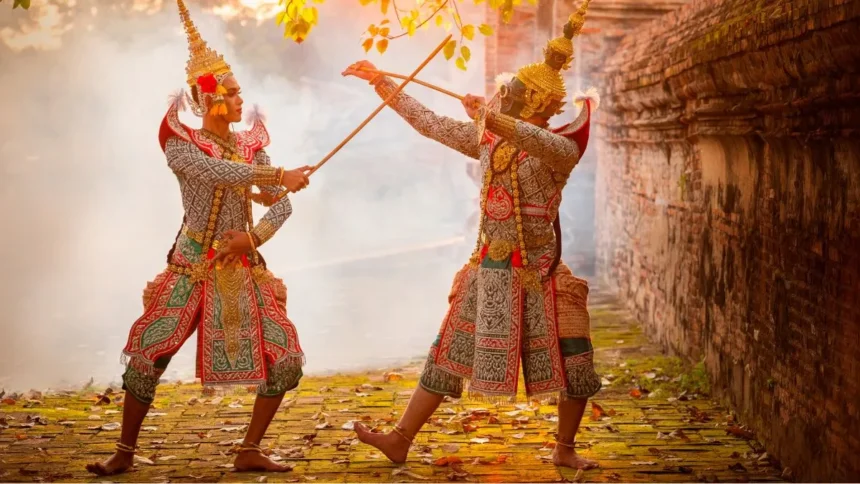Tourism has become a cornerstone of the global economy, drawing millions to vibrant destinations rich in cultural heritage, such as Bali, Machu Picchu, and the Maasai Mara. However, the influx of visitors often poses risks to the authenticity and sustainability of indigenous communities and their traditions. Preserving indigenous cultures is essential not only for safeguarding global cultural diversity but also for fostering sustainable tourism practices that benefit both travelers and host communities.
The Significance of Indigenous Cultures
a. Defining Indigenous Cultures
Indigenous cultures refer to the traditions, beliefs, and practices of native peoples who have maintained their unique identities and indigenous knowledge for generations. These cultures represent a rich tapestry of traditional practices, local customs, and unique worldviews that connect humanity to its roots.
b. Cultural Heritage as a Global Treasure
Indigenous cultures contribute to the preservation of cultural diversity, offering authentic experiences that educate and inspire visitors. Iconic sites like the Great Barrier Reef or the Amazon Rainforest are not just ecological marvels but also integral to the spiritual and cultural lives of their indigenous stewards.
The Impact of Tourism on Indigenous Cultures
a. Cultural Erosion
The rise of mass tourism can erode cultural identity, as traditional practices are commercialized or diluted to meet tourist expectations. For instance, indigenous ceremonies may lose their sacred meaning when performed solely for entertainment.
b. Threats to Heritage Sites
Tourism often leads to overexploitation of heritage sites, risking damage to the physical and cultural landmarks of indigenous communities. Iconic examples include overcrowding at Machu Picchu and the over-tourism affecting the Maori lands in New Zealand.
c. Economic Exploitation
While tourism generates income, the lack of community participation can result in financial gains bypassing locals. Instead, large corporations reap profits while indigenous communities struggle to sustain their cultural preservation efforts.
Strategies for Preserving Indigenous Cultures
a. Promoting Ethical and Sustainable Tourism
Ethical tourism encourages travelers to respect local customs and engage responsibly. Practices such as limiting visitor numbers and ensuring economic benefits reach local people help protect cultural heritage while promoting sustainable tourism.
b. Empowering Indigenous Communities
Providing tools for economic empowerment enables communities to manage tourism on their terms. For example, initiatives like indigenous-run eco-lodges or craft markets allow locals to benefit financially while maintaining control over their cultural narratives.
c. Education and Cultural Exchange
Raising awareness among tourists about the importance of heritage conservation fosters respectful interactions. Cultural exchange programs that prioritize learning over consumption enrich the travel experience while preserving traditional arts and knowledge.
Examples of Indigenous Cultural Preservation in Tourism
a. The Maasai of East Africa
The Maasai people, known for their vibrant attire and dances, have created initiatives to manage tourism that preserves their cultural identity. By offering authentic, community-led experiences, they promote responsible travel while safeguarding their heritage.
b. Native American Heritage Sites
In the United States, efforts to protect sacred sites like Monument Valley involve collaboration between tribal governments and tourism boards. These initiatives prioritize heritage conservation while supporting indigenous knowledge sharing.
c. Ecotourism in the Amazon
Programs in the Amazon Rainforest highlight the importance of sustainable tourism. Indigenous guides share their expertise in biodiversity and traditional practices, blending ecological preservation with cultural awareness.
Challenges in Cultural Preservation
a. Balancing Development and Tradition
Economic pressures often force indigenous communities to choose between cultural integrity and financial gain. The challenge lies in finding equilibrium between modernization and cultural preservation.
b. Addressing Cultural Appropriation
Tourism can inadvertently promote cultural appropriation when traditional arts and symbols are misused or commodified without proper acknowledgment or benefit to the originating community.
c. Overcoming Systemic Inequalities
Historical marginalization and limited access to resources hinder many communities from fully participating in tourism-driven economies. Ensuring inclusivity requires targeted investments and supportive policies.
The Role of Tourists in Cultural Preservation
a. Practicing Responsible Travel
Tourists play a crucial role in preserving indigenous cultures. By respecting local customs and supporting authentic experiences, they help sustain the cultural fabric of destinations.
b. Supporting Community-Led Initiatives
Choosing community-run accommodations, purchasing handcrafted goods, and participating in cultural workshops are impactful ways to empower indigenous communities.
c. Advocating for Ethical Tourism Practices
Tourists can influence industry standards by demanding transparency and fairness in tourism operations, prioritizing ethical tourism providers that align with heritage conservation goals.
Policy and Global Collaboration for Cultural Preservation
a. Governmental Support for Indigenous Rights
Governments must prioritize policies that protect heritage sites and provide funding for cultural preservation programs. Recognizing and upholding the rights of indigenous communities ensures their voices are integral to tourism strategies.
b. International Partnerships
Global collaborations between organizations like UNESCO, the UN World Tourism Organization, and local governments can advance initiatives that balance sustainable tourism with cultural preservation.
c. Technology and Preservation
Digital archives, virtual reality experiences, and online education about indigenous cultures can raise awareness and provide new avenues for preserving traditional practices in the digital age.
Future of Indigenous Cultural Preservation in Tourism
As tourism evolves, embracing responsible travel and community-led initiatives will remain critical to protecting cultural heritage. Collaboration between stakeholders—including governments, travelers, and indigenous communities—can create a future where tourism not only supports but also celebrates and preserves the world’s diverse traditions.
Last Words
Preserving indigenous cultures in popular destinations is an urgent and collective responsibility. From respecting local customs to promoting ethical tourism, every stakeholder plays a role in sustaining the rich tapestry of global traditions. By empowering indigenous communities, fostering cultural exchange, and implementing sustainable practices, tourism can become a force for cultural preservation rather than erosion. Through these efforts, future generations can continue to learn from and be inspired by the world’s invaluable indigenous heritage.







